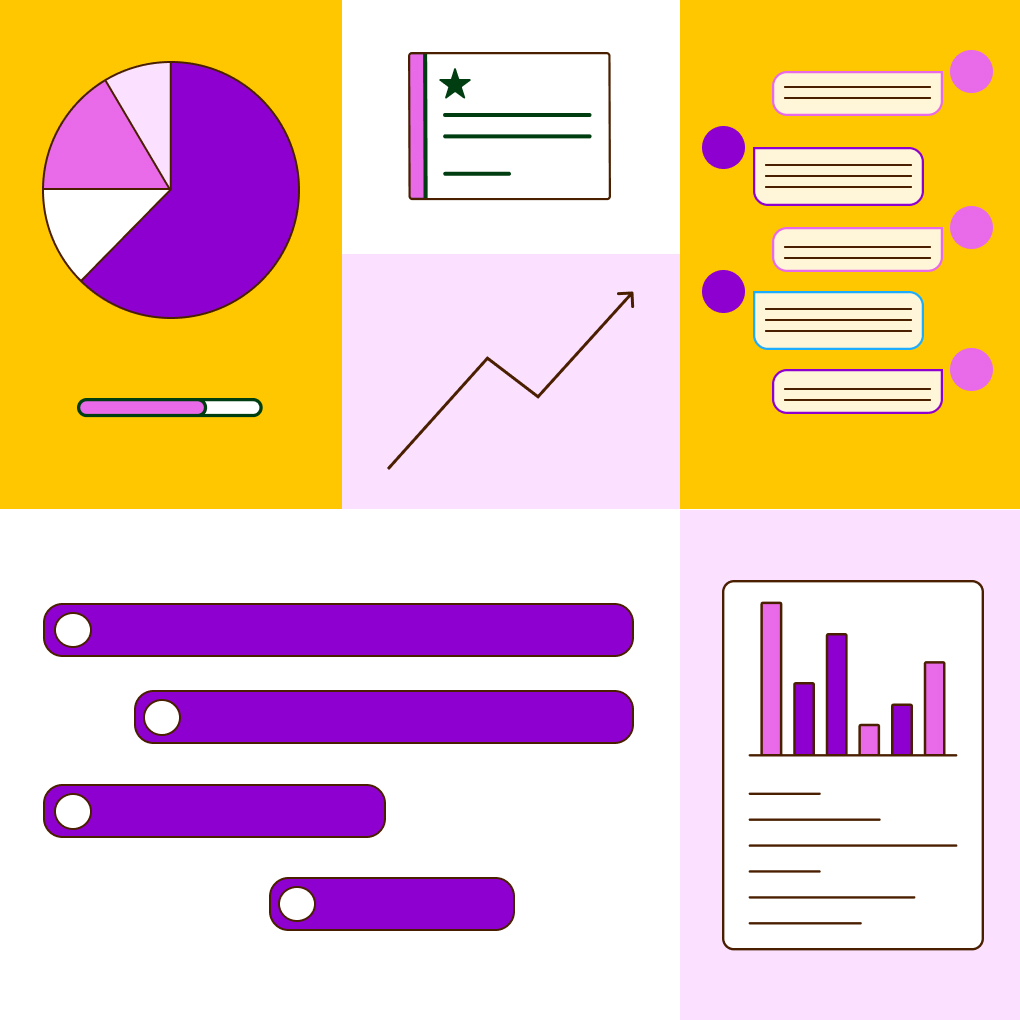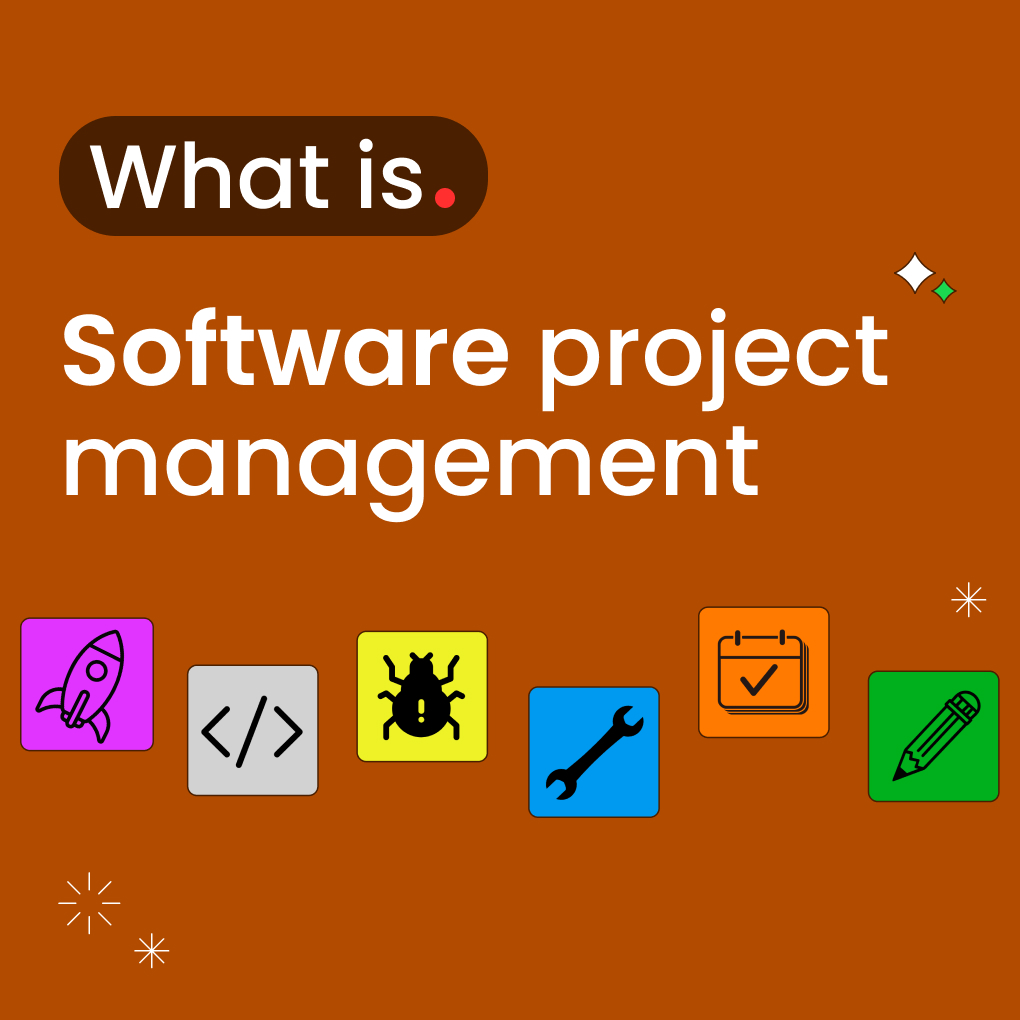Successfully navigating a project from a nascent idea to a completed deliverable requires more than just a capable team and a clear goal. It demands structure, foresight, and a systematic approach to planning, execution, and control. This is where project management techniques come into play – they are the specific methods, tools, and practices that project managers use to organize work, manage resources, mitigate risks, and ultimately steer projects toward their objectives.
Whether you’re just starting in project management or looking to refine your approach, understanding and applying the right techniques is crucial. This project management guide explores a range of essential project planning techniques and execution methods, from foundational tools like the Work Breakdown Structure (WBS) and Gantt charts to methodologies like Agile and Lean, and even touches upon specific program management techniques. Mastering these approaches can significantly improve project efficiency, predictability, and overall success rates.
What Are Project Management Techniques?
Project management techniques are specific, defined methods or procedures used to accomplish a particular task or objective within the project management process. They provide a structured way to approach various aspects of managing a project, such as planning scope, estimating time, allocating resources, identifying risks, or communicating progress.
Importance of Techniques in Successful Projects
Think of project management techniques as the specialized tools in a project manager’s toolkit. While overarching methodologies (like Agile or Waterfall) provide the overall strategy or philosophy, techniques are the practical means by which that strategy is implemented. Their importance stems from several factors:
- Structure & Consistency: Techniques provide repeatable, structured ways to handle common project tasks, ensuring consistency across projects and teams.
- Efficiency: By following proven methods, teams can often perform tasks more efficiently than relying on ad-hoc approaches. Techniques like WBS ensure thoroughness in planning, while methods like CPM optimize scheduling.
- Clarity & Communication: Many techniques, especially visual ones like Gantt charts or Kanban boards, improve clarity and facilitate communication about scope, schedule, and progress.
- Risk Reduction: Specific techniques are designed explicitly for identifying, analyzing, and mitigating risks (e.g., Risk Registers, Risk Matrices).
- Improved Decision-Making: Techniques like Earned Value Management (EVM) provide objective data to support decisions regarding project performance and forecasting.
- Problem Solving: Techniques offer frameworks for breaking down complex problems (like scope definition or scheduling) into manageable components.
Without applying appropriate techniques, project management can become chaotic and reactive. Utilizing these established methods brings discipline and predictability to the process, significantly increasing the chances of achieving project goals.
Techniques vs. Tools: Understanding the Difference
It’s important to distinguish between techniques and tools. A technique is a method or way of doing something. A tool is what you use to apply the technique.
- Technique Example: The Work Breakdown Structure (WBS) is a technique for decomposing project scope into smaller, manageable parts.
- Tool Example: Project management software (like Morningmate, Microsoft Project, Asana), mind mapping software, or even a simple spreadsheet can be tools used to create and manage a WBS.
Similarly, a Gantt chart is a visualization technique for project schedules; project management software is the tool used to create and update the Gantt chart. Kanban is a technique (or methodology) for managing workflow; a physical whiteboard or a digital tool like Trello or Jira is the tool used to implement the Kanban board. Understanding this distinction helps in selecting the right software (tools) to support the desired methods (techniques).
Essential Project Management Techniques
Numerous techniques exist, but some are fundamental to effective project planning, execution, and control. Here’s an overview of several essential ones:
Work Breakdown Structure (WBS)
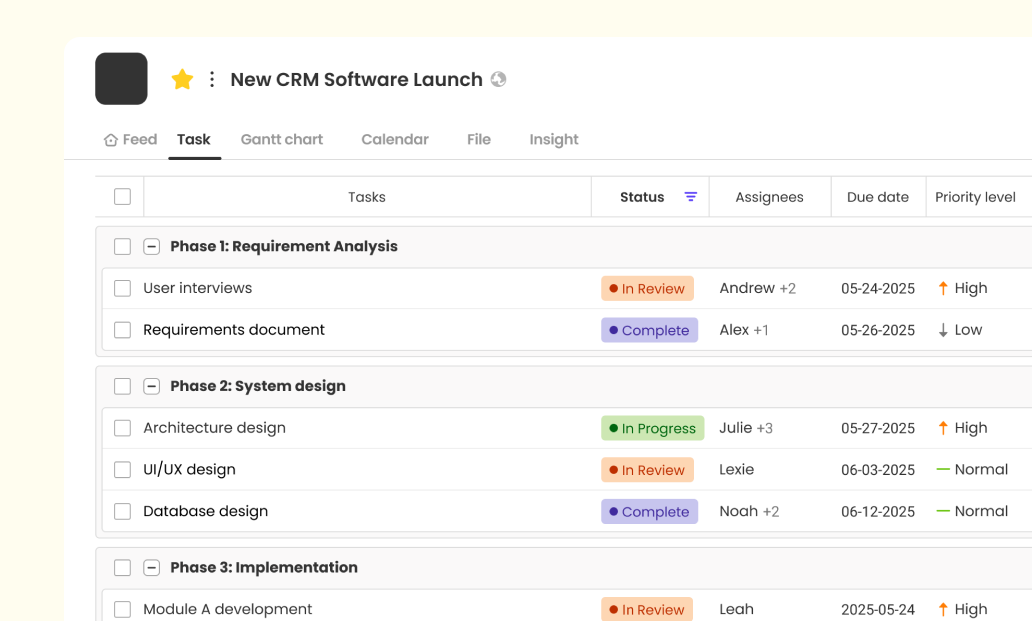
The WBS is a foundational planning technique used to define and organize the total scope of a project. It involves hierarchically decomposing the major project deliverables and work into smaller, more manageable components called work packages. Each descending level represents an increasingly detailed definition of the project work.
- How it works: Start with the final project deliverable at the top level. Break it down into major phases or sub-deliverables. Continue breaking down each component until you reach work packages – the lowest level, representing tasks that can be realistically estimated, scheduled, assigned, and tracked.
- Why it’s used: Ensures all required work is identified (preventing scope gaps), provides a framework for detailed planning (scheduling, costing, resource allocation), facilitates clear task assignment, and helps in tracking progress. It answers the question, “What work needs to be done?”
Gantt Charts
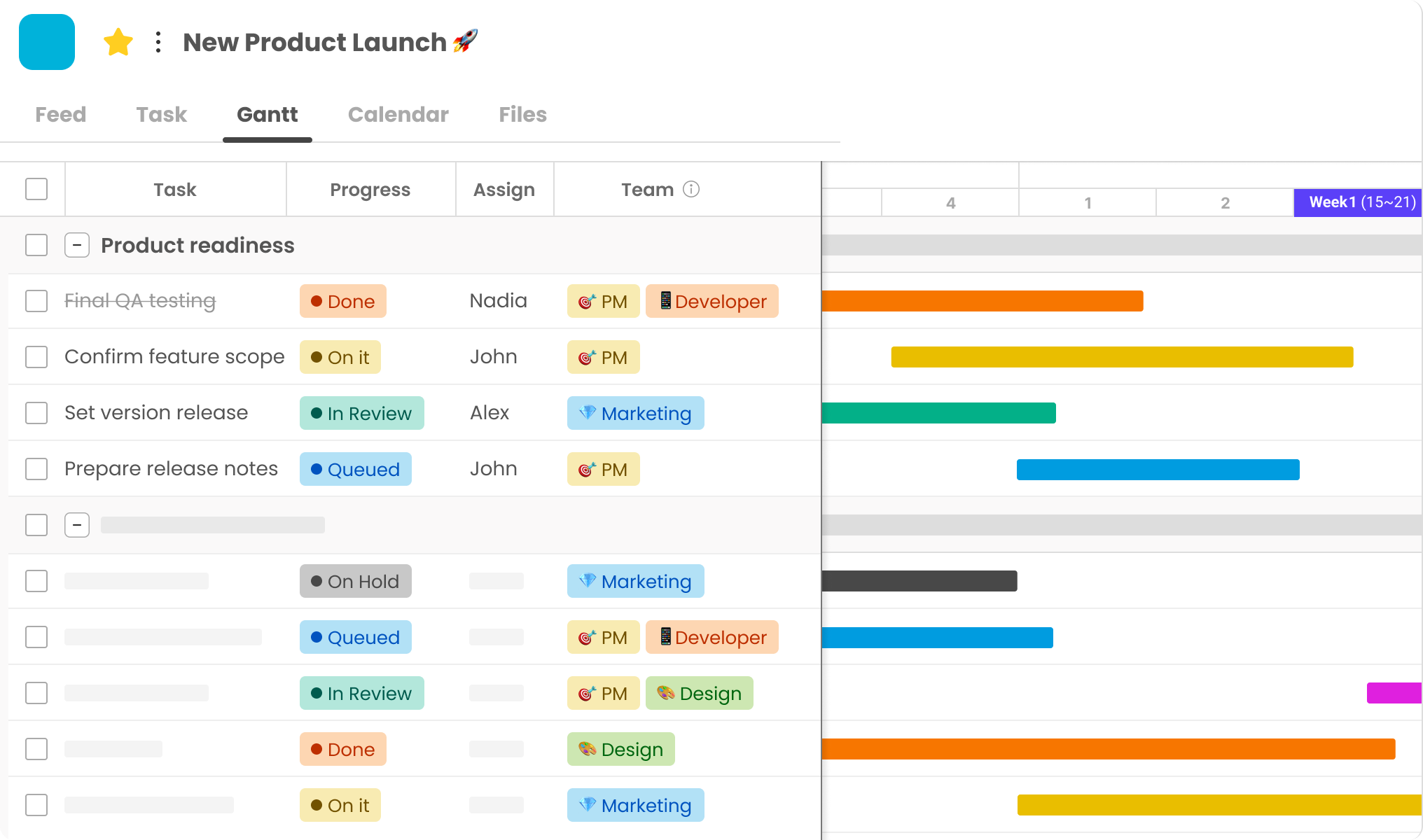
Named after Henry Gantt, this is one of the most popular techniques for visualizing a project schedule. A Gantt chart is a type of bar chart that illustrates the project timeline, showing the start and finish dates of individual tasks and summary elements.
- How it works: Tasks are listed vertically on the left axis, and time (days, weeks, months) is represented horizontally on the top or bottom axis. Each task is shown as a horizontal bar, with the bar’s position and length indicating its start date, duration, and end date. Dependencies between tasks can often be shown with connecting arrows. Milestones are typically marked with a distinct symbol (like a diamond).
- Why it’s used: Provides a clear visual overview of the project schedule, shows task durations and overlaps, helps track progress against planned dates, and makes it easy to communicate the timeline to stakeholders.
Critical Path Method (CPM)
CPM is a scheduling technique used to determine the longest sequence of dependent tasks required to complete a project and the earliest and latest possible start and finish times for all tasks. This longest sequence is known as the “critical path.”
- How it works: First, identify all project tasks and their dependencies (using WBS and dependency analysis). Estimate the duration of each task. Then, map these tasks and dependencies in a network diagram. CPM calculates the longest path through this network – the critical path. Tasks on the critical path have zero “float” or “slack,” meaning any delay in these tasks will directly delay the entire project’s completion date.
- Why it’s used: Identifies the tasks most critical to the project timeline, helps prioritize resources for critical tasks, allows managers to focus monitoring efforts, and determines the minimum project duration.
Program Evaluation and Review Technique (PERT)
PERT is another scheduling technique, often used in conjunction with CPM, particularly for projects with high uncertainty in task durations (like R&D projects). It uses a probabilistic approach to time estimates.
- How it works: Instead of a single duration estimate per task (like in basic CPM), PERT uses three estimates: Optimistic (O), Most Likely (M), and Pessimistic (P). It calculates an expected duration using a weighted average formula (typically (O + 4M + P) / 6) and also calculates the variance or standard deviation for task durations. This allows for estimating the probability of completing the project by a certain date. Like CPM, it identifies the critical path based on these expected durations.
- Why it’s used: Provides a more realistic schedule estimate when task durations are uncertain, quantifies the risk associated with schedule estimates, and helps manage projects with unpredictable elements.
Kanban Boards
Kanban is a visual workflow management technique (often considered a methodology itself) focused on limiting work in progress (WIP) and optimizing flow.
- How it works: Uses a visual board (physical or digital) divided into columns representing workflow stages (e.g., To Do, In Progress, Review, Done). Tasks are represented as cards that move across the board as they progress. Crucially, WIP limits are set for columns like “In Progress” to prevent bottlenecks and encourage task completion before starting new work.
- Why it’s used: Provides high visibility into workflow, identifies bottlenecks quickly, promotes continuous flow, increases efficiency by limiting multitasking, and offers flexibility in managing priorities.
Agile Project Management
Agile is less a single technique and more an umbrella term for iterative and incremental approaches (like Scrum and Kanban) that prioritize flexibility, collaboration, and rapid delivery. Key “techniques” within the Agile philosophy include User Stories, Backlog Grooming/Refinement, Sprints/Iterations, Daily Stand-ups, Retrospectives, and sometimes Continuous Integration/Continuous Delivery (CI/CD) in software contexts. Agile is used to manage projects with evolving requirements, deliver value faster, improve team collaboration, and increase responsiveness to change.
Scrum Framework
As a specific Agile framework, Scrum employs a set of defined roles, events, and artifacts. Techniques specific to Scrum include Sprint Planning, Daily Scrum meetings, Sprint Reviews, Sprint Retrospectives, maintaining Product and Sprint Backlogs, and using Burndown/Burnup Charts. Scrum provides structure within an Agile approach, promotes focus, ensures regular feedback loops, and facilitates team self-organization and improvement.
Waterfall Model
While often described as a methodology, the sequential execution of distinct phases (Requirements -> Design -> Implement -> Test -> Deploy) can be considered the core technique of the Waterfall approach. Each phase is completed fully before the next begins, often with formal sign-offs. Detailed documentation is typically produced at each stage. This technique provides strong control and predictability for projects with stable, well-understood requirements and ensures thorough documentation.
Lean Project Management
Lean focuses on eliminating waste and maximizing value. Techniques associated with Lean include Value Stream Mapping (visualizing flow to find waste), Kaizen (continuous improvement), 5S (workplace organization), Pull Systems (demand-driven work), and Root Cause Analysis (like the 5 Whys). Lean techniques are used to improve efficiency, reduce costs, shorten lead times, and increase customer value by relentlessly focusing on eliminating non-value-adding activities.
Earned Value Management (EVM)
EVM is a technique for objectively measuring project performance by integrating scope, schedule, and cost. It tracks Planned Value (PV), Earned Value (EV), and Actual Cost (AC). Comparing these allows calculation of variances (SV, CV) and performance indices (SPI, CPI) to determine if the project is on schedule/budget and to forecast future performance. EVM provides an integrated view of performance and offers early warnings of potential issues.
Risk Management Techniques (Risk Register, Risk Matrix)
These techniques specifically address project risks. A Risk Register logs identified risks, their characteristics (likelihood, impact, score), response plans, owners, and status. A Risk Matrix (or Probability/Impact Matrix) visually prioritizes risks based on their likelihood and impact, helping focus mitigation efforts on the most critical threats. These techniques enable systematic identification, analysis, prioritization, and tracking of risks.
Stakeholder Mapping
This technique involves identifying project stakeholders and analyzing their interest level and influence/power. Often visualized on a power/interest grid, it helps categorize stakeholders to tailor communication strategies, prioritize engagement efforts, anticipate support or opposition, and manage expectations effectively.
RACI Charts
A RACI chart (Responsible, Accountable, Consulted, Informed) clarifies roles and responsibilities for tasks or deliverables using a matrix format. It lists tasks against team members/roles, indicating their level of involvement (Doing, Owning, Inputting, Receiving Updates). This prevents confusion, ensures accountability, clarifies decision-making, and improves communication by defining who needs involvement.
RAID Logs
A RAID log (Risks, Assumptions, Issues, Dependencies) is a technique for actively tracking these critical project items in a structured register. Documenting each item with details like impact, owner, status, and resolution plan provides a central point for managing key uncertainties and blockers, reducing the chance they are overlooked.
Techniques for Program Management
While many project management techniques are also relevant at the program level, program management involves coordinating multiple projects to achieve strategic benefits, requiring some distinct approaches.
Program Management vs. Project Management Techniques
The primary difference lies in scale and focus. Project techniques (like WBS, CPM) focus on delivering specific project outputs within constraints. Program management techniques focus on coordinating these outputs, managing interdependencies, aligning with strategy, and realizing overall program benefits. Program managers use project-level data but apply techniques to see the bigger picture. For example, a program manager looks at risks across multiple projects (program risk), not just within one. They manage resources across projects, not just within a single team. Their focus is on strategic outcomes, not just project deliverables.
Program management vs. Project management >
Techniques Specific to Program Management
While leveraging many project techniques, program managers employ specific approaches:
Resource Coordination
Unlike project managers who allocate resources within their project, program managers focus on optimizing and coordinating resources across multiple projects within the program. This involves techniques like managing a shared Program-Level Resource Pool, performing Capacity Planning across the program’s timeline, and identifying and resolving Resource Conflicts between competing projects.
Cross-Project Risk Management
Program managers are concerned with risks that could impact the entire program or arise from the interactions between projects. Techniques include maintaining a Program Risk Register (aggregating major project risks and identifying program-level risks), performing Dependency Analysis between projects, and using Scenario Planning to assess the impact of risks on overall program objectives.
Benefit Realization Mapping
Since programs focus on benefits, techniques are used to define, track, and measure their realization. Benefit Mapping visually links project outputs to intermediate outcomes and ultimately to strategic program benefits. Benefit Profiles document each expected benefit, including measurement criteria and targets. Benefits Tracking & Reporting involves regularly monitoring progress towards achieving these benefits throughout and often beyond the program’s execution phase.
Choosing the Right Technique for Your Project
With so many techniques available, selecting the most appropriate ones is key.
Factors to Consider (Scope, Timeline, Team Size)
Several factors influence the choice of techniques. The Project Scope & Clarity is crucial; well-defined scope suits WBS and Waterfall, while evolving scope favors Agile techniques. The Project Timeline & Urgency matters; tight deadlines might require CPM, while uncertainty suggests PERT or Agile. Team Size & Experience also play a role; large teams may need formal RACI charts, while experienced Agile teams might prefer Kanban or Scrum. Higher Complexity & Uncertainty often point towards Agile, Lean, or robust Risk Management, whereas simpler projects might only need basic WBS and Gantt charts. Finally, Industry & Constraints often dictate preferred or required techniques.
Matching Technique to Project Type
Different project types often lean towards specific techniques. For instance, Construction/Manufacturing projects frequently use Waterfall, WBS, CPM, and Gantt Charts due to their sequential nature. Software Development heavily relies on Agile, Scrum, Kanban, and User Stories because requirements often change. R&D/Innovation projects with high uncertainty might use PERT or Agile methods. Process Improvement initiatives often employ Lean, Six Sigma, or Kanban. Marketing Campaigns can utilize Agile Marketing, Kanban, or Gantt Charts depending on their structure.
Supporting Your Management Style with the Morningmate
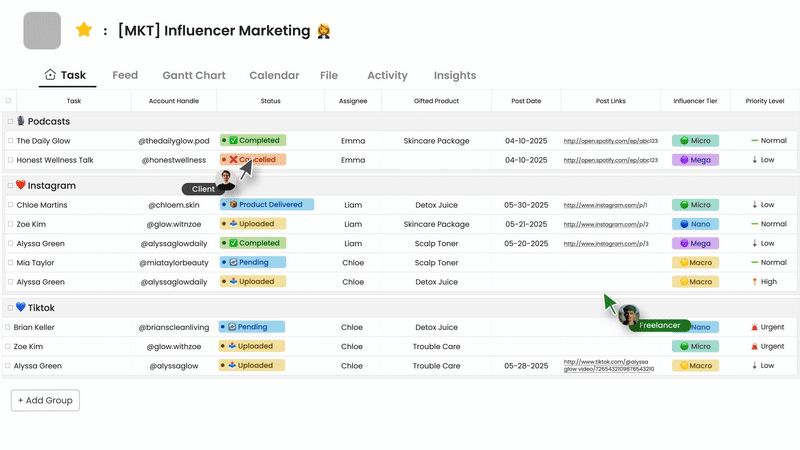
Regardless of the specific techniques chosen, a versatile project management tool is essential. Morningmate, as an all-in-one digital workspace, offers flexibility to support various techniques. Its task management features (boards, lists) can be configured for Kanban or to track tasks derived from a WBS within Waterfall or Agile sprints. Gantt chart views (often available in such tools, though specific features depend on the plan) help visualize schedules created using CPM or PERT principles.
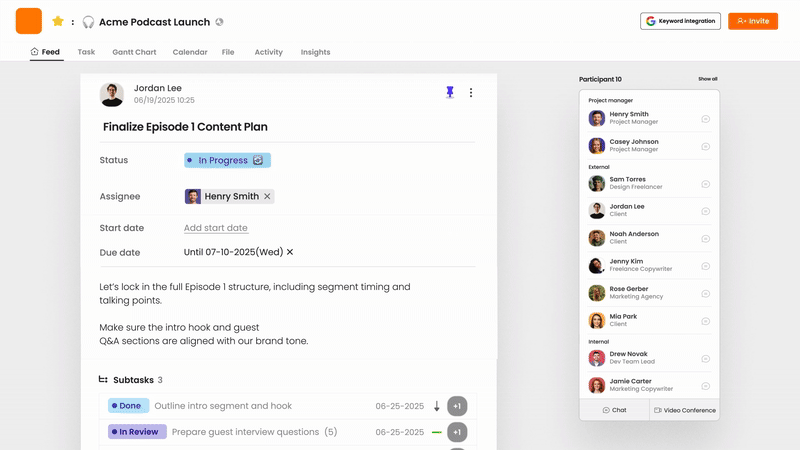
The integrated communication (feed, messenger) facilitates the collaboration needed for Agile, Scrum, and effective Stakeholder Mapping or RACI implementation. Risk and issue tracking can be managed within project tasks or dedicated lists, supporting Risk Registers or RAID Logs. By centralizing work, communication, and potentially reporting, Morningmate can support the application of numerous project and program management techniques within a unified environment.
Conclusion
Mastering project management techniques is essential for transforming project goals into successful outcomes. From foundational project planning techniques like the Work Breakdown Structure (WBS), Gantt Charts, and Critical Path Method (CPM) to adaptive approaches like Agile, Scrum, and Kanban, and performance measures like Earned Value Management (EVM), each technique provides a specific method for tackling aspects of planning, execution, and control. Understanding the different types and knowing when to apply them based on project scope, complexity, and team dynamics is a hallmark of effective project leadership. Furthermore, recognizing the distinct needs and techniques of program management helps align multiple projects with strategic goals. By thoughtfully selecting and applying these proven methods, supported by capable tools like Morningmate, project managers can bring structure, clarity, and efficiency to their endeavors, significantly increasing their chances of delivering value and achieving project success.

